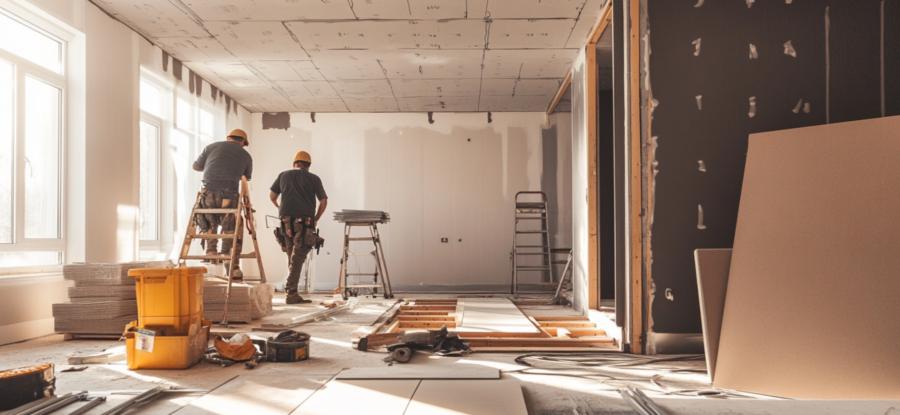Why Renovators Have a Sixth Sense for Interior Design
Some people study interior design for years, memorizing color theory, furniture placement principles, and the subtle differences between “greige” and “taupe.” Others swing a hammer for a decade and somehow just know how to make a room work. The latter group? Renovators. And they may just be the secret weapon in creating a stunning, functional home.Think about it—who has more experience with how spaces actually get used? A designer might plan a gorgeous open-concept kitchen, but a seasoned contractor has seen enough poorly designed ones to know that the fridge shouldn’t be ten feet away from the stove, or that a white marble countertop is just a spaghetti sauce crime scene waiting to happen.
Renovators develop their eye through repetition, problem-solving, and an unfortunate number of calls that start with, “We have a bit of an issue.” They’ve learned, often through disaster, how materials hold up, how people interact with spaces, and which trends turn into immediate regrets (looking at you, vessel sinks).
Why Practicality Always Wins
A designer might choose a plush, luxurious carpet because it looks beautiful in a showroom. A renovator, meanwhile, will glance at that same carpet and immediately picture it after a month of toddler stomping, coffee spills, and the mysterious ability of socks to attract every crumb in existence.The truth is, function beats form every time in real-world living. Renovators instinctively know this. They’ve ripped out enough regrettable design decisions—think oversized bathtubs no one ever uses, open shelving that becomes a cluttered nightmare, or bathroom doors that don’t fully close (yes, this happens)—to have a built-in sense of what actually works.
They’re also working with their hands every day, which means they understand material durability on an intimate level. They can tell you which types of wood will warp in humidity, which tiles will crack if you breathe on them wrong, and which cabinet hinges will make you question your life choices in six months.
How to Tap Into a Renovator’s Design Instincts
Now, let’s say you’re not planning to hire an interior designer, but you still want that refined, well-thought-out look. Here’s the secret: start asking your contractor questions about design.Most renovators aren’t going to volunteer their design opinions outright—after all, they’ve spent years being told, “Just stick to the plan.” But get them talking, and you’ll quickly realize they have insights you’d never have considered.
Try asking:
– “What’s a feature you’ve seen in a home that people end up hating?”
– “If this were your house, what material would you choose for the countertops?”
– “Have you seen any recent trends that you think will age terribly?”
You might be surprised at the goldmine of knowledge they have—especially if you catch them in a moment of brutal honesty.
Why “Looks Good on Paper” is a Dangerous Concept
Designers work with concepts, mood boards, and 3D renderings. Renovators work with their hands, figuring out how to make those concepts actually function in a home. And sometimes, those two worlds collide—usually when a designer’s beautiful vision forgets that physics and real life exist.Take floating staircases. Sure, they look modern and sleek, but try walking down one in the middle of the night when you’re half-asleep and stepping on what feels like a void. Or oversized chandeliers in modest-sized dining rooms—great for atmosphere, terrible for the unlucky soul who sits directly under it and spends dinner trying to avoid a concussion.
Renovators have seen these things play out in real homes. They’ve dealt with beautiful-but-impractical kitchen islands that block major walking paths, ceilings that are too low for the trendy lighting someone picked, and closet doors that swing open just enough to trap you inside like a bad escape room. They know what’s going to drive you crazy, even if it looks great in a showroom.
Renovation Teams as Your Secret Design Advisors
The key to getting the best design advice from a renovator? Treat them like an insider. Instead of presenting them with a finalized plan and saying, “Just build this,” try asking for input before decisions are locked in.Many renovators will appreciate the opportunity to share their expertise—especially since it can save both of you from future headaches. If they’ve been in the business for a while, they can tell you where it makes sense to splurge, where to cut costs, and which trendy features you’ll be sick of in six months.
Another trick? Watch how they react when discussing certain design ideas. If a contractor suddenly gets quiet and shifts uncomfortably when you mention something like floor-to-ceiling glass showers, that’s your cue to ask, “Be honest. What’s wrong with it?”. Chances are, they know from experience that it’s going to be a cleaning nightmare.
Hammering Home the Best Design Choices
When it comes down to it, interior design isn’t just about what looks good—it’s about what works well in everyday life. And nobody understands that better than the people who spend their days fixing the mistakes of past designs.So next time you’re planning a renovation, take a moment to pick your contractor’s brain. They’ve seen it all, from genius layouts to total disasters, and their insights might just save you from a future filled with regrets—and really bad lighting choices.
Article kindly provided by londonhomerenovation.co.uk

